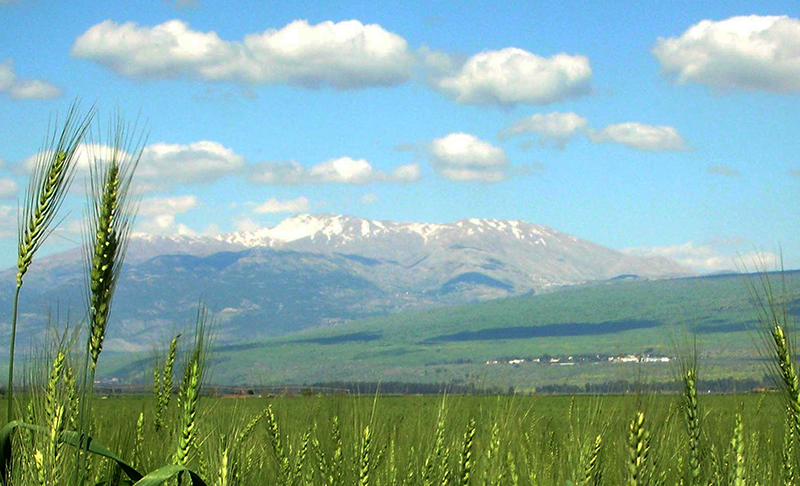
A mountain, or mountain range, located in what is today called the Anti-Lebanon range, one of two ranges that form the spine of the country of modern Lebanon. It is mention 16× in the OT, and marked the northern limits of the territory conquered by Joshua (Jos 11:3-17; 12:1-5; 13:5-11).

Mount Hermon
☰ Open Map
With its majestic heights, whose peaks used to be covered with snow all year round, it is no surprise that this mountain or mountain range (there is some uncertainty about what is specifically intended by the name) was well-known to the ancient peoples around the region. Thus, Deut 3:9 tells us that Sidonians called it Sirion, while the Amorites called it >Senir. It is also known as Siyon (4:48). It is uncertain if Amana is also another synonym (Song 4:8). What is surprising is that the name is not found in any ANE text.
The name Hermon may be traced to a Semitic root, hrm, which means 'ban' or 'taboo' (cf. what is haram to Muslims), possibly indicating that, for long, the mountain was associated with deities. So it is also not surprising that more than twenty temples and sanctuaries have been found in the mountain's surroundings.
The mountain is included in Deuteronomy's delineation of the territories belonging to Og, the king of Bashan, which the Israelites conquered and allocated to the Transjordan tribe of Manasseh (1 Chron 5:23). In the psalms and the Song of Solomon Hermon is a source of idyllic comfort, which one psalmist compares to Mount Zion where "the Lord bestows his blessing, even life for evermore" (Psm 133:3). There too hailed the Lover's bride (Song 4:8), though whether this is poetic license or a specific geographic reference is uncertain.

©ALBERITH
020715lch